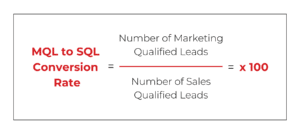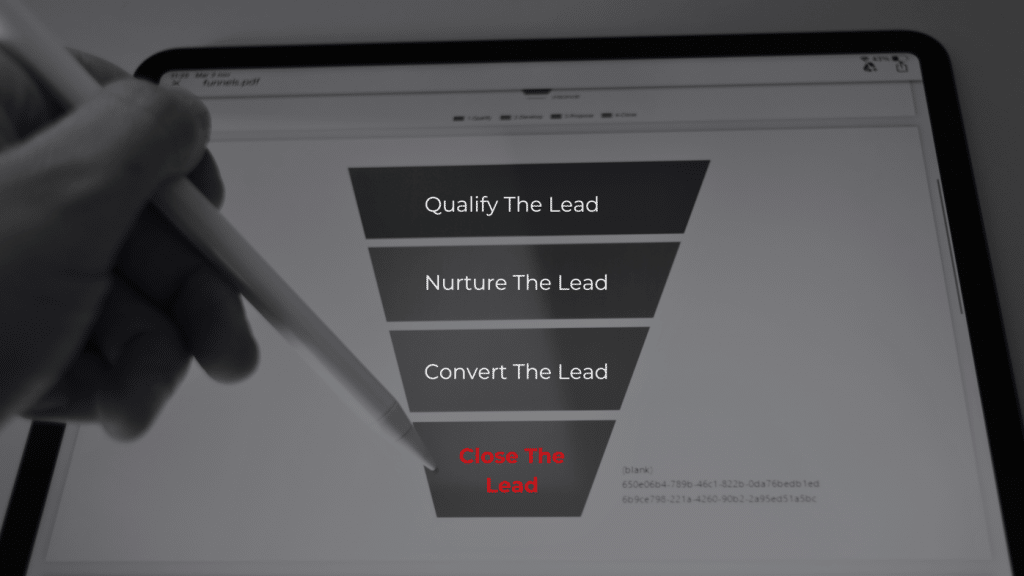It’s no secret that the sales and marketing teams operate on different timelines and with different goals in mind. Generally, the marketing team is responsible for generating leads, while the sales team is responsible for converting those leads into paying customers.
But what happens when there’s a disconnect between these two teams? What happens when a lead isn’t clearly marked as “sales qualified”? In this blog post, we’ll explore the difference between marketing qualified leads (MQLs) and sales qualified leads (SQLs), show you how to calculate (and increase) your MQL to SQL conversion rate, and offer some actionable tips on how to take a lead from MQL to SQL to client step by step. Let’s get started!
What is an MQL?
A marketing qualified lead (MQL) is a prospect who has been identified by the marketing team as having the potential to become a paying customer. MQLs are typically generated through marketing activities such as lead nurturing, content downloads, webinars, or free trials.
At its core, an MQL is a lead that has engaged with your brand in some way and has shown enough interest to warrant further attention from the sales team. For example, an MQL might be a lead who:
- Has downloaded a content offer such as an eBook or white paper
- Has subscribed to a newsletter or email list
- Has attended a webinar
- Has requested a free trial of your product
In short, an MQL is a lead that has shown more interest than the average person, and as such, is more likely to convert into an SQL.
What is an SQL?
A sales qualified lead (SQL) is a prospect who has been vetted by the sales team and determined to be ready to engage in the sales process. In other words, an SQL is a lead that’s “sales-ready.” The criteria for an SQL can vary from company to company, but typically includes factors such as Budget, Authority, Need, and Timeline (BANT).
For example, a lead might be considered an SQL if they:
- Have a budget set aside for your product or service
- Have the authority to make a purchasing decision
- Have a demonstrated need for your product or service
- Are ready to buy within a reasonable timeframe
In short, an SQL is a lead that has been given the green light by the sales team to move forward in the sales process.
What is the difference between an SQL and MQL?
The main difference between an SQL and an MQL is that an SQL has been vetted by the sales team and determined to be a good fit for the product or service being sold, while an MQL has only been identified by the marketing team as a potential customer.
To put it another way:
MQLs meaning: Leads that have shown interest in your product or service, but may not be ready to buy just yet.
SQLs meaning: Leads that have been determined to be a good fit for your offering, and the sales team can focus on closing the deal.
Why does this difference matter?
Leads come in all shapes and sizes, and it can be tough to know how to best nurture them. Knowing which are MQLs and which are SQLs helps you focus your energies on the leads that are most likely to convert, saving you time and effort in the long run. By understanding the difference between these two types of leads, you can develop a more targeted and effective lead nurturing process that delivers the best possible results.
Which is more valuable? MQLs or SQLs?
There’s no easy answer to this question, as it depends on your business and your sales process. At first glance, it may seem like SQLs are more valuable than MQLs. After all, they are the ones who are actually likely to convert into a sale.
However, MQLs should not be overlooked. While they may not make a purchase right away, they have shown an interest in your product or service and are more likely to convert in the future. They’ve already been through your marketing funnel and have been nurtured with targeted content. As a result, they are typically better educated about your offering and more likely to become lifelong customers.
Some businesses place more value on SQLs because they’re further along in the sales process. Others place more value on MQLs because they represent a larger pool of potential customers. Ultimately, it’s up to you to decide which type of lead is more valuable for your business.
How to take a lead from MQL to SQL to client
The goal of any good marketing team should be to generate high-quality leads that eventually turn into paying customers. But how do you take a lead from MQL to SQL? While there’s some variation depending on the nature of your offering, these are the four major steps you can take to move a lead down the sales funnel:
- Qualify the lead. The first step is to qualify the lead to make sure they’re a good fit for your product or service. This can be done by looking at factors such as budget, authority, need, and timeline (BANT).
- Nurture the lead. Once you’ve qualified the lead, it’s time to start nurturing them with relevant content that will help them move further down the sales funnel. This could include blog posts, ebooks, webinars, or even one-on-one conversations with a sales representative.
- Convert the lead. The next step is to convert the lead into an SQL. This can be done by having a sales representative reach out and further qualify the lead.
- Close the deal. The final step is to close the deal and turn the SQL into a paying customer. This is where the rubber meets the road and where the sales team really earns their keep!
How to calculate your MQL to SQL conversion rate
Once you’ve gone through the process of taking a lead from MQL to SQL, it’s time to calculate your conversion rate. This number is important because it tells you how effectively your marketing team is generating leads that are sales-ready.
To do this, simply take the number of MQLs that have been converted to SQLs and divide it by the total number of MQLs. For example, if you have 100 MQLs and 10 of them have been converted to SQLs, your conversion rate would be 10%.

How to increase your MQL to SQL conversion rate
If you’re not happy with your current conversion rate, there are a few things you can do to increase it. Let’s take a look at some tips.
6 tips for increasing your MQL to SQL conversion rate
- Make it easy for prospects to raise their hand and express interest in your product or service. Include prominently placed call-to-actions on your website and make sure that your contact information is easy to find.
- Improve your lead nurturing process. One of the best ways to improve your conversion rate is to make sure you’re doing a good job of nurturing your leads. This means sending them relevant, targeted content that will help move them further down the sales funnel. The more you engage with a lead, the more likely they are to eventually do business with you.
- Make sure you’re qualifying your leads properly. Another way to improve your conversion rate is to make sure you’re qualifying your leads properly from the start. This means ensuring they fit your target customer profile and are a good fit for your product or service. If you’re getting lots of low-quality leads, it could be an indication that your website or marketing content isn’t speaking to the right audience – in other words, you need to revisit your SEO.
- Train your sales team properly. It’s also important to make sure you’re providing adequate training for your sales team. They should know how to properly qualify and nurture leads so they can be converted into SQLs.
- Use marketing automation software. Marketing automation software can be a valuable tool for increasing your conversion rate. This type of software can help automate lead nurturing and make it easier for sales representatives to follow up with leads.
- Monitor your conversion rate regularly. Finally, it’s important to keep an eye on your conversion rate and track it over time. This will help you identify any areas that need improvement so you can continue to increase your MQL to SQL conversion rate.
By following these tips, you can dramatically increase the number of sales qualified leads in your pipeline and close more deals.
Final thoughts
- The main difference between an SQL and an MQL is that an SQL has been vetted by the sales team and determined to be a good fit for the product or service being sold, while an MQL has only been identified by the marketing team as a potential customer.
- To increase your MQL to SQL conversion rate, make sure you’re doing a good job of qualifying and nurturing your leads.
- You should also provide adequate training for your sales team and make use of marketing automation software.
- Finally, keep an eye on your conversion rate so you can identify any areas that need improvement.
Following these tips will help you increase your MQL to SQL conversion rate and close more deals! If you need guidance or aren’t sure where to begin, then Ruby Digital has you covered. We’re experts in all things digital marketing, online advertising, and sales, and we can help you take your business to the next level. Contact us today to learn more!



